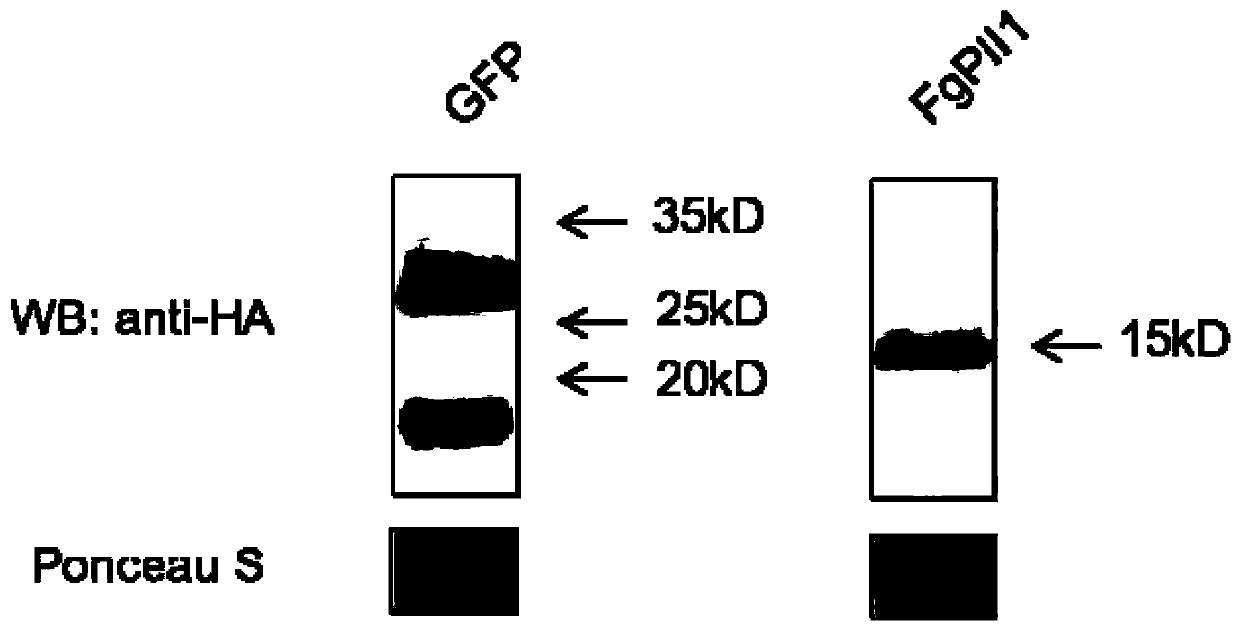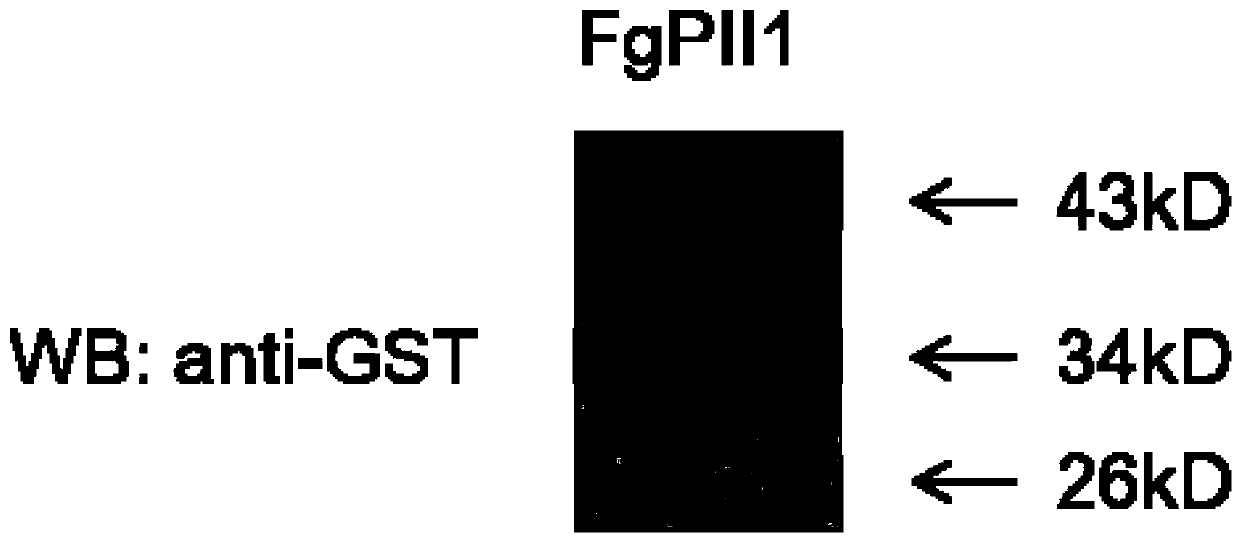Plant immune induced resistance protein FgPII1 secreted by fusarium graminearum and application of plant immune induced resistance protein FgPII1
An immune-inducing protein and technology of Fusarium graminearum, applied in the fields of application, plant gene improvement, plant growth regulator, etc., can solve the problems that restrict the sustainable development of agriculture, plant phytotoxicity, environmental pollution, etc.
- Summary
- Abstract
- Description
- Claims
- Application Information
AI Technical Summary
Problems solved by technology
Method used
Image
Examples
Embodiment 1
[0045] Example 1. Isolation and identification of plant immune inducer protein FgPII1
[0046] Inoculate Fusarium graminearum on PDA (get 200 g of peeled potatoes, cut into small pieces, add ultrapure water and boil for 30 min, remove the potato pieces by filtering with four layers of gauze, add 20 g of glucose and 15 g of agar powder to the filtrate, and use the filtrate to Make up to 1000mL with ultra-pure water, subpack after melting, sterilize with high pressure steam at 121°C for 30min) on a plate, culture at 25°C for 7 days, pick the edge of the colony and inoculate it in 200mL of PDB (the formula is the same as that of PDA medium, agar powder (without adding) liquid medium in a 500mL Erlenmeyer flask, placed in a shaker at 25°C and 180r / min and cultivated for 5 days to obtain a culture solution of Fusarium graminearum. The culture filtrate was taken and centrifuged at 4°C and 8000 rpm for 30 min, the supernatant was collected, and further filtered with a 0.22 μM membran...
Embodiment 2
[0047] Example 2. Cloning and Plant Transient Expression of the Gene Encoding the Plant Immunity Inducing Protein FgPII1
[0048] (1) Extraction of total RNA: The mycelium of Fusarium graminearum cultured in liquid was used as the material, and the total RNA was extracted using the RNA extraction kit of Omega Company according to the instructions, and the RNA content and quality were detected by a spectrometer.
[0049] (2) Reverse transcription to generate the first strand: take 0.5 μg RNA as a template, perform cDNA synthesis according to the instructions of Takara’s PrimeScript reverse transcriptase reagent kit, and dilute to 20 μL for reaction. Take an appropriate amount of reverse transcription product for subsequent gene cloning PCR.
[0050] (3) Using the first strand of cDNA as an RT-PCR template, perform PCR in a conventional method to amplify the full length of the gene encoding FgPII1:
[0051] PCR primer amplified sequence:
[0052] Upstream primer: SEQ ID NO.3 ...
Embodiment 3
[0064] Example 3. Prokaryotic expression and purification of plant immune inducer protein FgPII1
[0065] (1) Construction of prokaryotic expression vector
[0066] Design specific primers for the gene encoding plant immune inducer protein FgPII1,
[0067] Upstream primer: SEQ ID NO.5
[0068] (5'-TCCCCAGGAATTCCC ATGAGCCCCATCCTCGAGACC-3')
[0069] Downstream primer: SEQ ID NO.6
[0070] (5'-CGCTCGAGTCGACCCGCTAGTGCCAGTGCAGCCA-3'),
[0071]50 μL reaction system: 5× buffer 10 μL, 2.5 mM dNTPs 4 μL, Takara PrimerSTARTaq enzyme 0.5 μL, template cDNA 1 μL, add water to 50 μL; PCR amplification program is 98°C pre-denaturation for 3 minutes, 98°C for 15 seconds, 58°C for 15 minutes Seconds, 72°C extension for 40 seconds, 35 cycles, and finally 72°C extension for 10 minutes; electrophoresis separation on agarose gel, ethidium bromide (EB) staining and photography, record the results, and cut the gel to recover the PCR product of the gene encoding FgPII1 . The electrophoresis ban...
PUM
 Login to View More
Login to View More Abstract
Description
Claims
Application Information
 Login to View More
Login to View More - R&D
- Intellectual Property
- Life Sciences
- Materials
- Tech Scout
- Unparalleled Data Quality
- Higher Quality Content
- 60% Fewer Hallucinations
Browse by: Latest US Patents, China's latest patents, Technical Efficacy Thesaurus, Application Domain, Technology Topic, Popular Technical Reports.
© 2025 PatSnap. All rights reserved.Legal|Privacy policy|Modern Slavery Act Transparency Statement|Sitemap|About US| Contact US: help@patsnap.com



